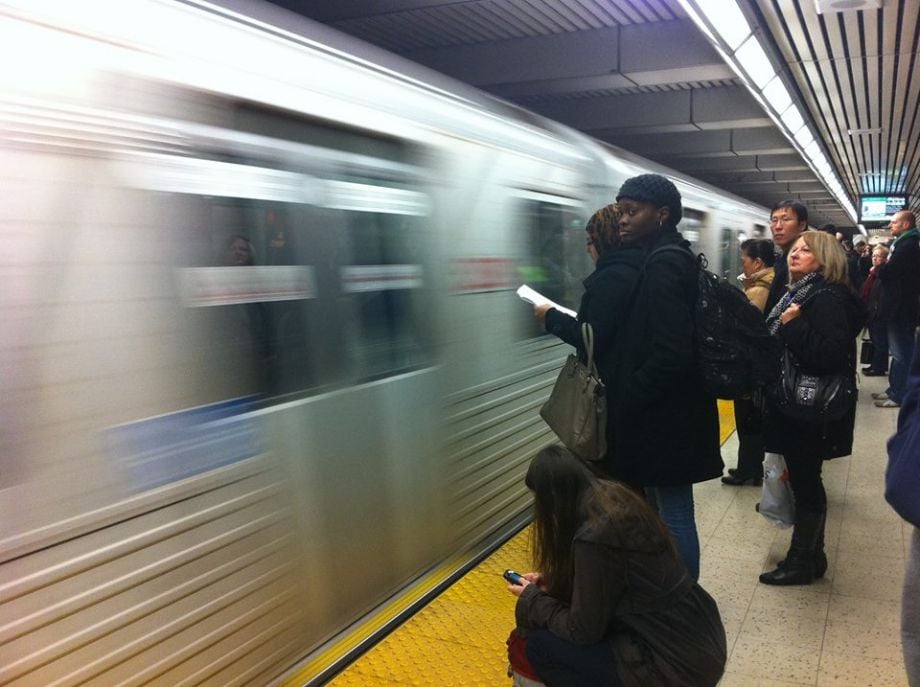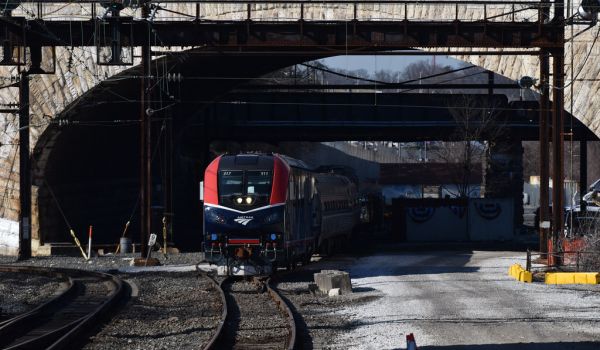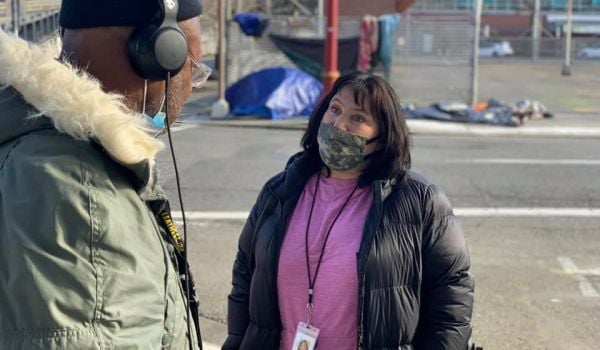Welcome to “The Mobile City,” our weekly roundup of noteworthy transportation developments.
Survey Reveals Sharp Splits on Including Transit in Infrastructure Package
A survey of 400 local government leaders found that while there is broad consensus on spending “infrastructure” money on roads, water projects, the electric grid and broadband, that consensus breaks down over mass transit, Route Fifty reports.
The survey found both a partisan and a geographic divide on the need to spend money on transit infrastructure. While 73 percent of Democratic officials supported transit spending, only 35 percent of Republicans did. (Independents fell in between the two poles, with 49 percent favoring transit spending.)
The divide was not as sharp but still significant when city size was the metric. Transit spending enjoyed the support of nearly 75 percent of respondents from cities with 75,000 or more inhabitants, while that figure dropped to 55 percent in cities with 15,000 to 75,000 residents and only 40 percent in cities with fewer than 15,000.
The survey, which was conducted by CivicPulse for Route Fifty and Stanford University’s Bill Lee Center for the American West, was designed to get the broad spectrum of urban opinion on infrastructure matters. Especially smaller cities, said CivicPulse Managing Director Nathan Lee, a public policy professor at the University of Rochester.
“Because there are so many local governments, and many local governments are so small, often their voices are left out in the conversation in D.C.,” Lee told Route Fifty. “But when you put all these local governments together, they represent a huge portion of the ultimate users of this funding,” he added. “It’s really important to ground truth what their priorities are.”
While the great majority of American urbanites live in larger cities, the great majority of local governments are smaller ones, which makes the divide on transit spending particularly relevant. By comparison, most other categories of infrastructure spending enjoyed support across the board: 93 percent of those surveyed supported spending on roads and bridges, 83 percent favored spending on water projects, and 73 percent said they supported spending on both broadband and the electricity grid. Only 40 percent overall supported transit spending.
“It’s not to say that there isn’t support for mass transit,” Lee added about the findings. “It’s rather to say that support for mass transit is concentrated in larger cities.”
Critic, Contractor Call for Shrinking of Freeway Widening Project in Oregon
According to its official website, the Oregon Department of Transportation’s (ODOT) plan to widen I-5 through Portland’s Rose Quarter aims to suture a wound the highway opened when it was pushed through the area in the 1960s. ODOT will build covers and new crossings over the wider highway to reconnect the Lower Albina neighborhood, a mostly Black section of northeast Portland that the freeway split in two.
But both a noted Portland urbanist and a contractor on the project say that the Rose Quarter reconstruction will do no such thing unless the highway’s new footprint is trimmed.
Willamette Week reports that an ODOT contractor, San Francisco-based Arup, has been calling on ODOT to reduce the width of the new highway by 20 feet in order to significantly reduce the cost of capping the road. Arup suggested in an April 28 report that the current design, which includes 12-foot interior shoulder lanes, is like nothing else in the country and would cost $500 to $700 million to cap.
Most local officials, some of whom opposed any highway widening when ODOT first proposed rebuilding freeway interchanges in the area in the 1990s, now support some widening but want ODOT to keep widening to a minimum and emphasize restoring connections on the surface. Members of Oregon’s Congressional delegation in Washington have also weighed in on the side of the neighborhood.
Meanwhile, Joe Cortright at City Observatory has accused ODOT of acting in bad faith, saying that ODOT is engaged in “a coverup” of a plan to ultimately push a 10-lane freeway through Lower Albina and “cap” it with “slightly enlarged overpasses” that wouldn’t serve as public space.
But, Willamette Week reports, ODOT has so far shown no interest in taking Arup up on its recommendation to trim the project. And City Observatory goes even further, accusing the department of “woke-washing” its effort to push a much wider freeway through an already traumatized neighborhood.
Amtrak Unveils Project to Eliminate a Notorious Bottleneck
The Hudson River tunnels aren’t the only major chokepoint on Amtrak’s Northeast Corridor line that needs replacing. An even worse one lies under Baltimore, where a crumbling 150-year-old tunnel constrains both the speed of trains and the people-moving capacity of the rail line.
Railway Age and Mass Transit both reported June 21 that Amtrak and the Maryland Department of Transportation are now ready to get rid of that bottleneck, too.
The two agencies will work together on a new replacement for the Baltimore & Potomac Tunnel that will enable high-speed passenger train service all the way from Baltimore Penn Station to Washington Union Station’s throat.
The new twin-tube tunnel, to be completed sometime in 2033, will be named for Frederick Douglass, the Maryland-born abolitionist who used the railroad to free himself from slavery.
The tunnel is the key component of Amtrak’s B&P Tunnel Replacement Program, which will also rebuild bridges, tracks and control systems on a four-mile stretch of the NEC line in West Baltimore. The project will also include a new West Baltimore station for MARC Penn Line regional trains, which will be 100 percent electrified once the project is complete.
A major change to the project’s original design produced savings of $1 billion in costs and two years’ construction time. The change was to build only two new tubes now, instead of the four that had originally been planned, and have freight trains continue to use the old B&P tunnel, which the Federal Railroad Administration has rated structurally deficient.
Both Amtrak and Maryland will work together to identify funding sources for the project. The total cost of the project is estimated at $4 billion. Amtrak has committed $65 million to preliminary design work next year and also expects $257 million in federal funding that would allow construction work to begin in 2023.
“This is a critical project for Baltimore, for the state of Maryland and for the entire Northeast Corridor of the United States, and we plan to work with Amtrak and the federal government to move it forward as expeditiously as possible,” Maryland Gov. Larry Hogan said at a June 17 ceremony marking Amtrak’s 50th anniversary.
UPDATE: We have corrected the spelling of Joe Cortright’s name.
Know of a development that should be featured in this column? Send a Tweet with links to @MarketStEl using the hashtag #mobilecity.

Next City contributor Sandy Smith is the home and real estate editor at Philadelphia magazine. Over the years, his work has appeared in Hidden City Philadelphia, the Philadelphia Inquirer and other local and regional publications. His interest in cities stretches back to his youth in Kansas City, and his career in journalism and media relations extends back that far as well.
Follow Sandy .(JavaScript must be enabled to view this email address)
















